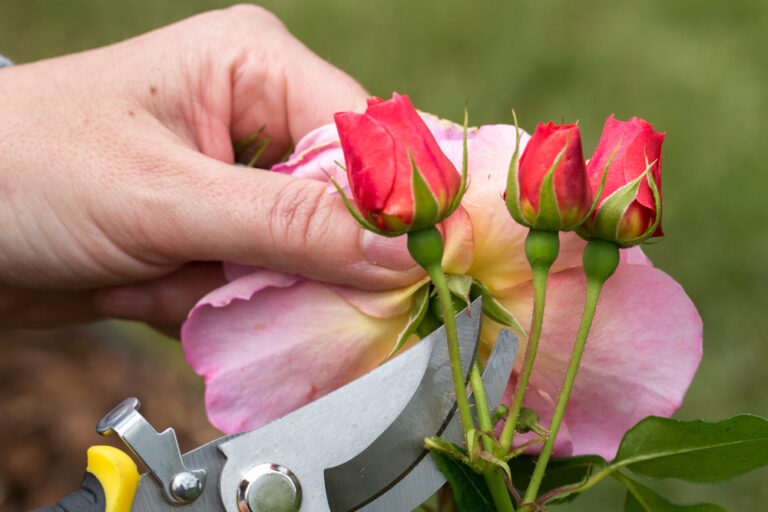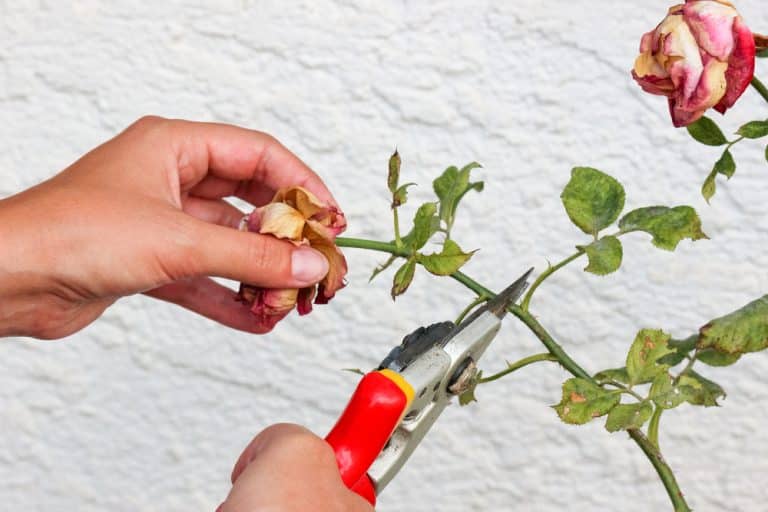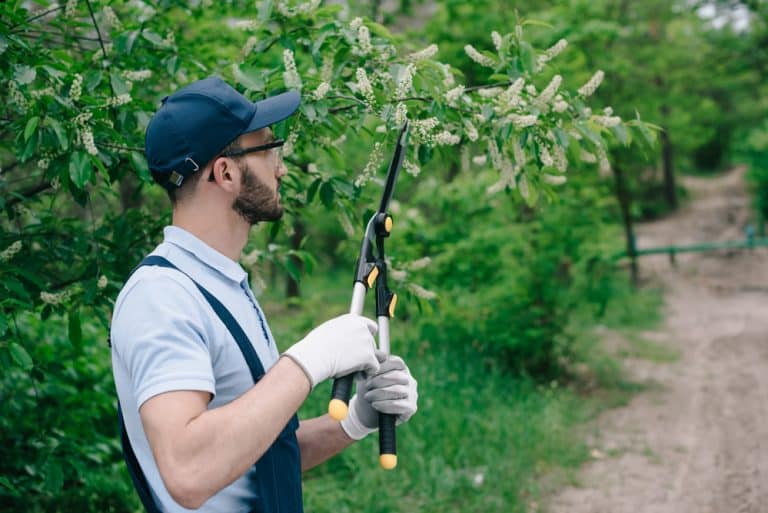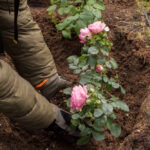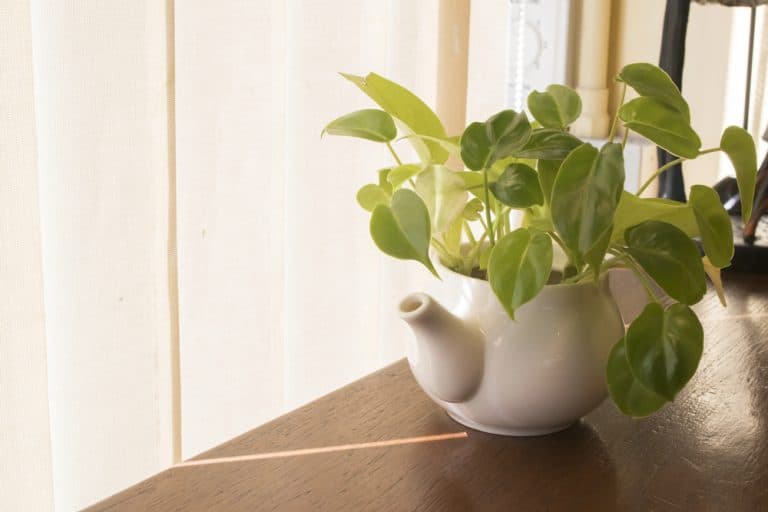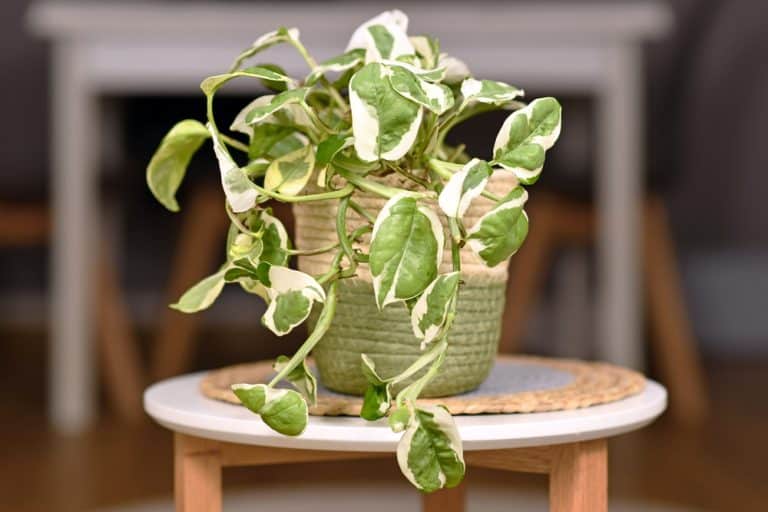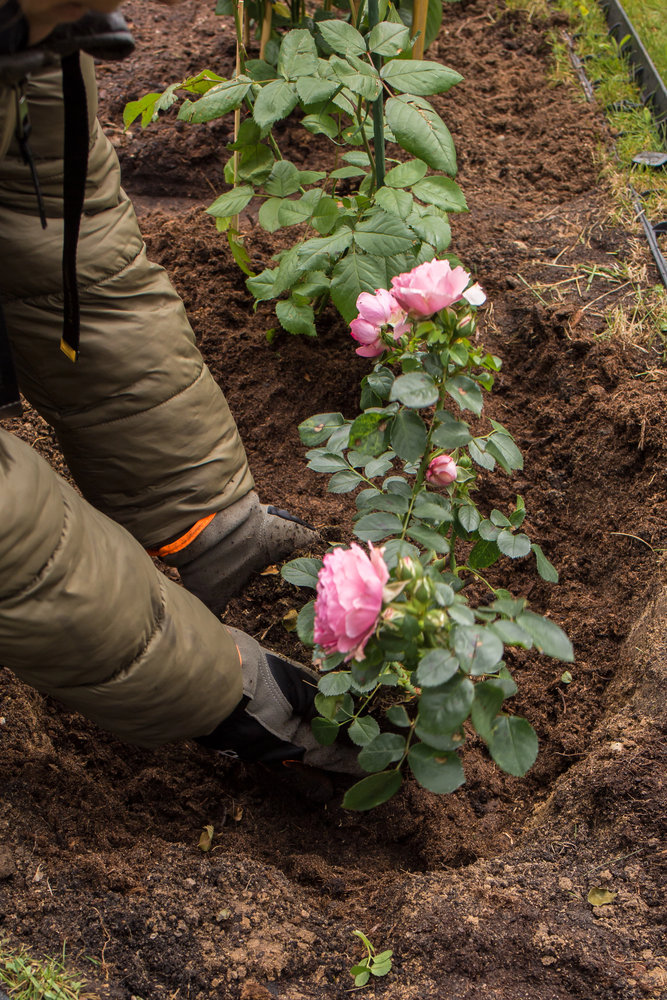
1. Start with the Right Foundation
The first lesson in how to care for roses begins underground. Healthy roots create resilient blooms. Choose a planting site that receives 6–8 hours of sunlight daily and has well-drained, loamy soil.
Roses dislike “wet feet,” so amend heavy clay with compost, perlite, or coarse sand. A slightly acidic soil pH between 6.0 and 6.5 allows nutrient uptake at peak efficiency.
Pro Tip: Incorporate mycorrhizal fungi at planting time. Research from the Royal Horticultural Society (RHS) found this boosts root health and disease resistance significantly (source).
2. Choose Roses That Fit Your Lifestyle
Understanding how to care for roses also means choosing types that fit your schedule and climate.
-
Low-maintenance options: Knock Out and Drift roses thrive with minimal pruning.
-
Fragrant favorites: Damask and David Austin English roses enchant with perfume.
-
Climbers: Perfect for trellises and pergolas, bringing vertical drama to small spaces.
If your region experiences harsh winters, look for hardy shrub varieties or grafted rootstocks suitable for your USDA zone. The right rose equals the right rhythm between gardener and plant.
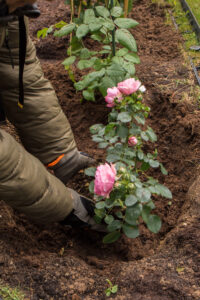
3. Perfect Your Planting Timing
Timing is everything in how to care for roses.
Plant bare-root roses in early spring before buds break, and potted roses once soil warms to 50°F (10°C). The golden rule: never plant in soggy or frozen ground.
Dig a hole twice as wide as the root spread but no deeper. Mix in compost and bone meal, ensuring the graft union sits slightly above soil level in warm climates and below in cold ones.
Water immediately after planting to settle roots—your rose’s “first drink of life.”
4. Water Deeply, Not Often
Roses crave consistency, not frequency. When mastering how to care for roses, think “slow and deep.”
Water early in the day at the base of the plant, allowing moisture to soak 12–18 inches deep. Avoid wetting leaves—moist foliage invites fungal infections like black spot.
Use soaker hoses or drip irrigation for even distribution. During hot months, maintain about 1–2 inches of water weekly, adjusting for rainfall.
A mulch layer of bark or straw reduces evaporation and regulates soil temperature—a secret many gardeners overlook.
5. Nourish with Smart Feeding
Feeding roses is like feeding athletes—you’re fueling performance.
Once new growth appears, feed every 4–6 weeks using a balanced fertilizer (10-10-10) or specialized rose food. For a sustainable approach, alternate chemical feeds with organics such as compost tea or fish emulsion.
Magnesium sulfate (Epsom salt) enhances chlorophyll production, giving deeper green leaves and more blooms. Sprinkle one tablespoon per plant monthly.
According to the American Rose Society, consistent nutrition improves bloom cycles and fragrance intensity by over 30% (source).
6. Master Pruning Psychology
Learning how to care for roses means understanding plant psychology—pruning isn’t punishment; it’s empowerment.
When: Late winter or early spring, right before new growth.
Why: To remove diseased, dead, or crossing branches and stimulate airflow.
How: Always cut at a 45° angle, ¼ inch above an outward-facing bud.
For continuous blooms, deadhead regularly, but let the final flowers in autumn form hips—nature’s way of telling the rose to rest.
Bonus: Annual rejuvenation pruning every 3–4 years restores vigor to aging plants.
7. Outsmart Common Rose Enemies
Every gardener studying how to care for roses eventually meets a pest or two. Aphids, thrips, and Japanese beetles can wreak havoc if unchecked.
Combat these intruders naturally:
-
Spray neem oil weekly during infestations.
-
Introduce beneficial insects like ladybugs or lacewings.
-
Use garlic or marigold companion plants to repel pests naturally.
Fungal foes like powdery mildew and rust thrive in humidity. Prevent outbreaks by pruning for airflow and removing fallen leaves promptly.
According to the University of California’s Integrated Pest Management Program, preventive pruning reduces disease incidence by 50% (source).
8. Adapt Care Through the Seasons
The rhythm of how to care for roses changes with the calendar.
-
Spring: Prune, fertilize, and apply mulch.
-
Summer: Deep watering, deadheading, and pest checks.
-
Autumn: Reduce feeding and allow rose hips to form naturally.
-
Winter: Protect roots with a thick mulch blanket; cover exposed canes with burlap in freezing zones.
In mild climates, keep roses hydrated monthly, even in dormancy.
Remember: roses follow nature’s rhythm, not yours—listen, observe, and adapt.
9. Boost Blooms with Advanced Secrets
For those ready to elevate their rose mastery, how to care for roses enters the realm of fine-tuning.
-
Foliar feeding: Apply diluted liquid fertilizer directly to leaves early morning for rapid nutrient absorption.
-
Compost layering: Top-dress soil with compost twice yearly to feed beneficial microbes.
-
Light manipulation: Reflective surfaces like white stones or walls can amplify light in shaded areas.
-
Sound and vibration: Emerging studies suggest gentle classical music and natural vibration may stimulate plant metabolism and growth.
These small details separate casual gardeners from true rose artisans.
The Emotional Core of Rose Care
Roses respond not just to fertilizer, but to attention. Every gardener who studies how to care for roses learns the emotional dialogue between human and plant.
Regular observation teaches timing, balance, and patience. That mindfulness fosters not just blooms, but calm. Gardening becomes a form of therapy—a dialogue of beauty and growth.
A study published in Horticultural Science Journal linked rose gardening to measurable decreases in stress hormones and improved mood regulation. In other words, how to care for roses is also how to care for yourself.
Scientific Backing for Expert Rose Care
-
Royal Horticultural Society (RHS): Organic matter and microbial diversity improve rose longevity (source).
-
American Rose Society: Balanced fertilization and deep watering yield superior bloom cycles (source).
-
University of California Agriculture: Proper irrigation reduces disease risk (source).
-
Missouri Botanical Garden: Mulching prevents moisture loss and stabilizes temperature (source).
Together, these research insights validate what passionate gardeners have always known—roses reward those who nurture wisely.
Final Reflections
Mastering how to care for roses means cultivating both technique and tenderness. Each step—from soil preparation to pruning—is an act of respect for life’s delicate balance.
Roses reflect their caretakers: resilient, graceful, and endlessly renewing. With consistency, observation, and love, your garden becomes a living masterpiece that mirrors your growth as much as your skill.
Reference
- Missouri Botanical Garden advises integrating organic matter to sustain soil microbes critical for root strength (source).
